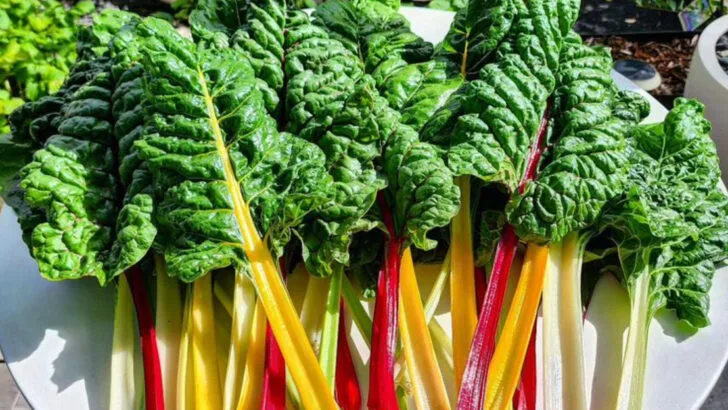Why choose between a beautiful garden and a productive one when you can have both? These 20 edible plants bring serious visual impact to your garden, container display, or balcony—and they’re just as delicious as they are dazzling. From vibrant rainbow chard to purple basil and flowering herbs, these varieties prove that food can be every bit as ornamental as flowers.
Perfect for small spaces, front yards, or design-conscious gardeners, these plants blend form and function seamlessly. Think sculptural kale, deep-red lettuce, and climbing beans that bloom like vines—each one adding beauty while pulling double duty in the kitchen.
Whether you’re looking to impress dinner guests with a “from-the-garden” harvest or want to turn your edible plot into a photo-worthy oasis, this list is your go-to guide for edible plants that don’t compromise on style.
Purple Basil
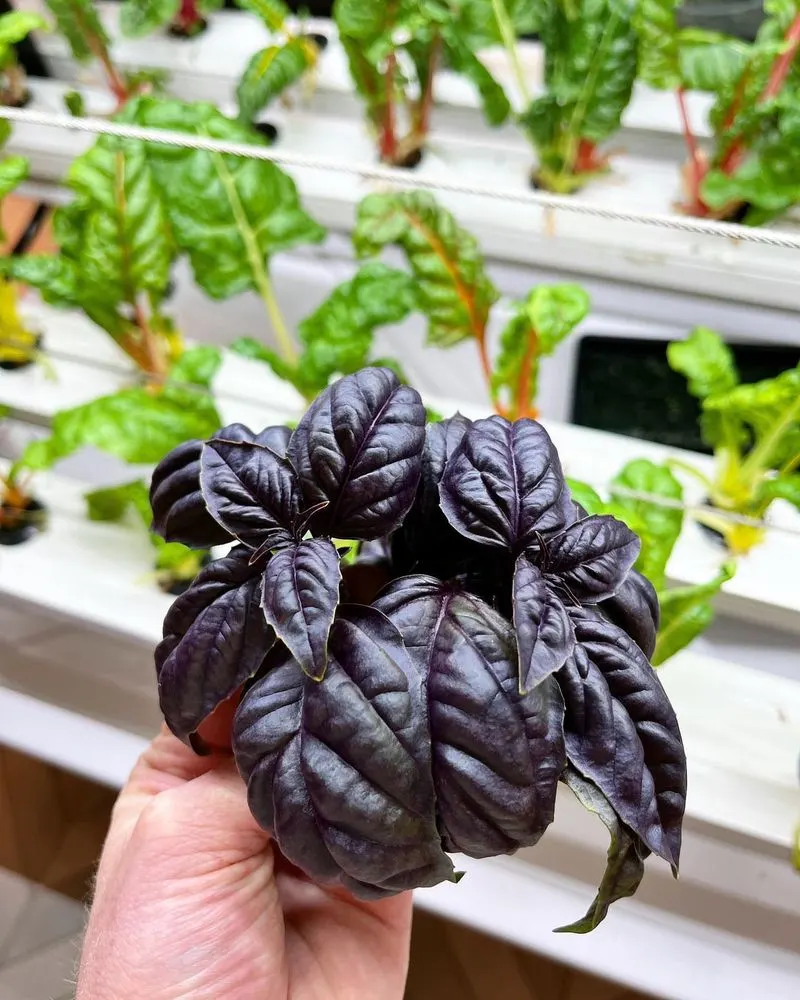
Purple basil isn’t just for culinary use; its deep, rich color adds a regal touch to any garden. With a flavor that hints at clove, it’s perfect for infusing oils and vinegars. Not only does it enhance dishes, but its striking appearance makes it a decorative asset. Whether planted in pots or garden beds, purple basil stands out. What’s more, it’s incredibly easy to grow and maintain. As you walk through your garden, the aroma of this basil is both calming and invigorating, creating a sensory delight. Truly, a plant that satisfies both taste and sight.
Lavender
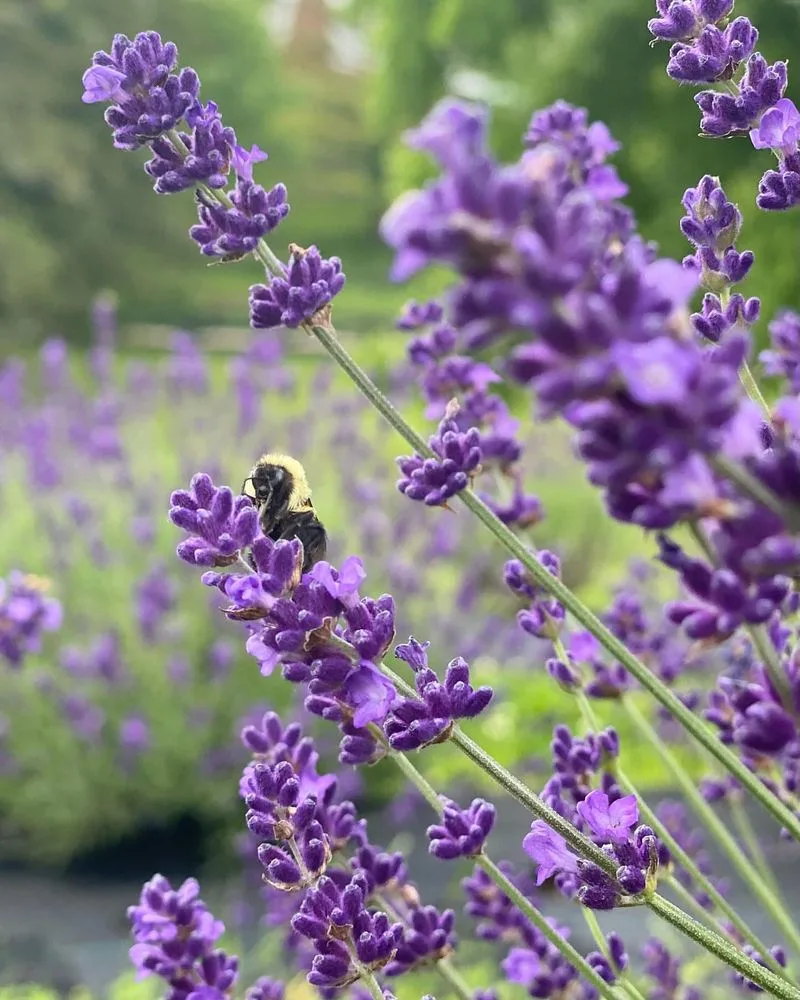
Lavender, with its soothing fragrance and striking purple flowers, evokes images of fleeting summer days. It’s not just a visual delight; this versatile plant offers culinary uses too. Infuse your dishes with a subtle hint of lavender for an exotic twist. The plant’s calming scent makes it perfect for relaxation, whether in the garden or dried in sachets. Lavender thrives in sunny spots, making it an ideal addition to any landscape seeking color and aroma. Its drought-resistant nature ensures minimal maintenance, allowing you more time to enjoy its benefits.
Rosemary
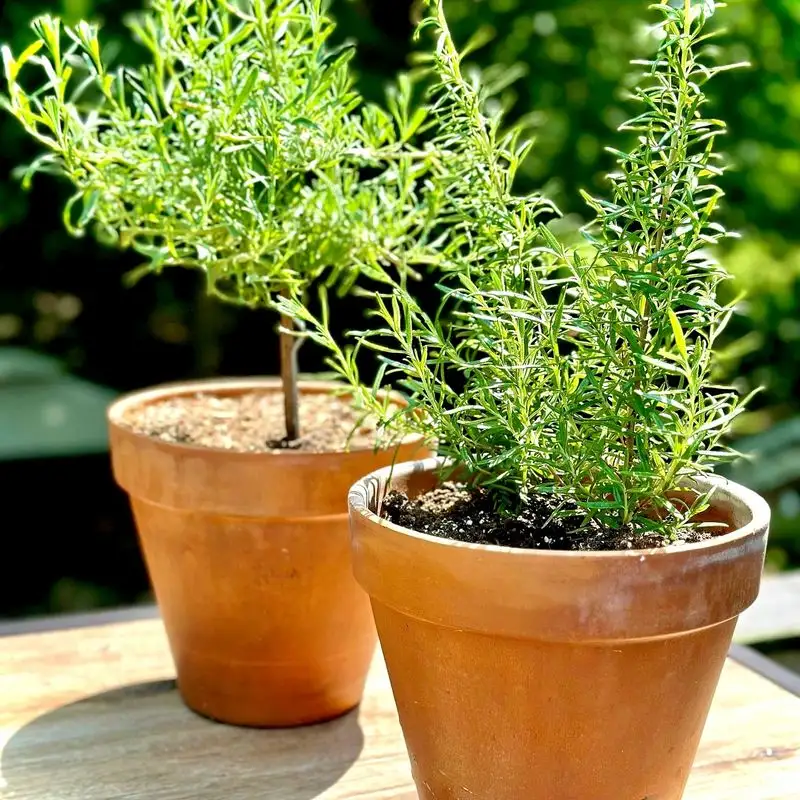
Rosemary’s robust character is unmistakable in both the kitchen and the garden. Its needle-like leaves pack a punch of flavor, perfect for roasts and stews. In the garden, it offers an evergreen display and delicate blue flowers. This drought-tolerant plant is a favorite among gardeners seeking a low-maintenance yet decorative option. The scent of rosemary is invigorating, a blend of pine and mint that refreshes the senses. Its upright growth habit adds structure to garden beds. A plant that’s as pleasing to the eye as it is to the taste buds.
Calendula
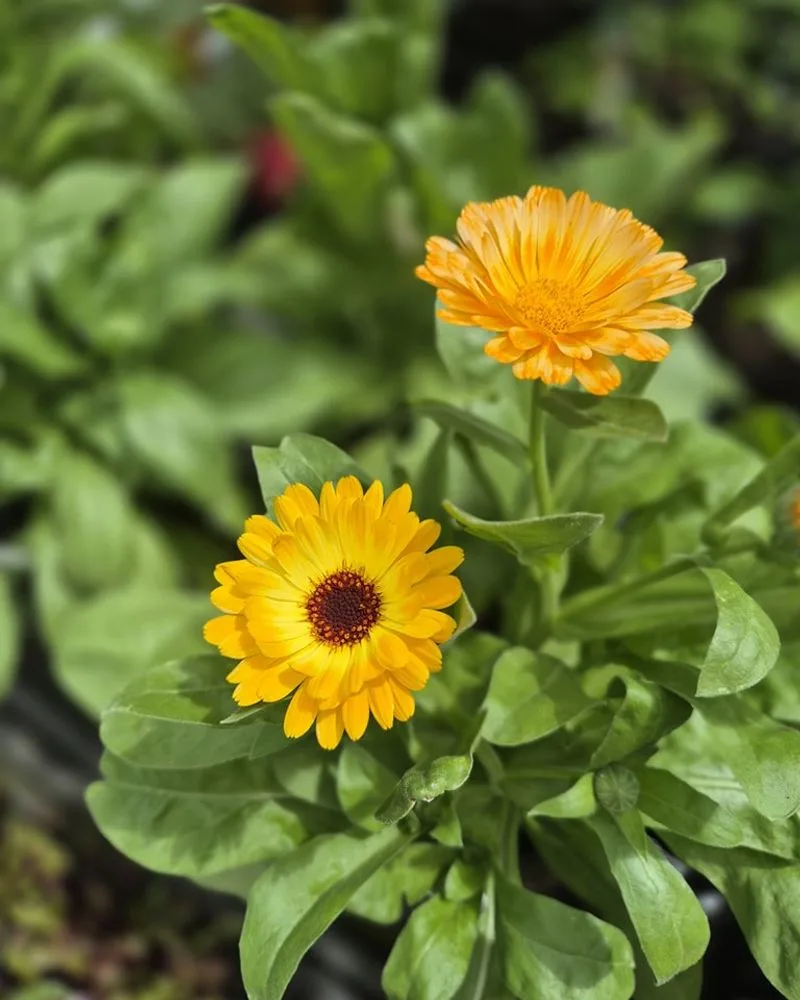
Calendula, often known as pot marigold, shines with its bright, cheerful blooms. Not just a pretty face, these flowers are edible, adding color to salads and teas. Their warm hues light up any garden corner, attracting pollinators like bees and butterflies. Calendula is known for its skin-healing properties, making it a valuable addition to herbal remedies. It’s easy to grow and thrives in various climates. As the sun sets, the blooms close, a charming feature that adds to its character. A delightful blend of beauty and utility.
Chives
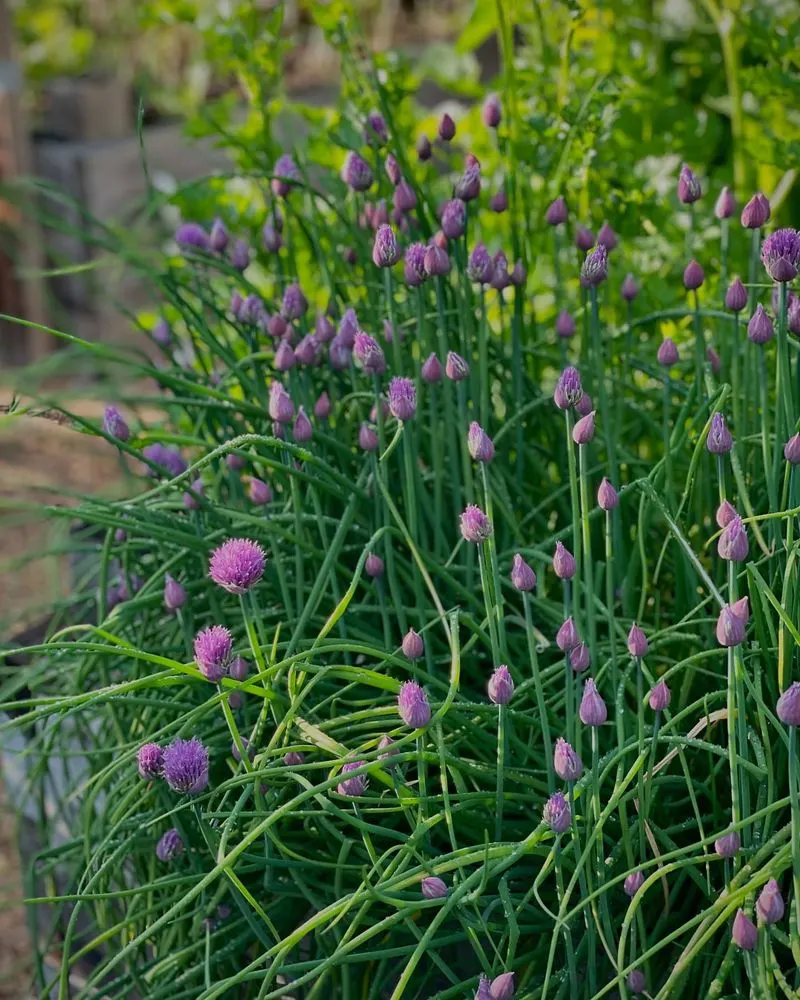
Chives might seem humble, but their bright green stems and purple flowers are anything but ordinary. This hardy perennial brings a mild onion flavor to dishes, while its blooms add a pop of color to garden beds. Ideal for edging pathways or filling in garden gaps, chives are versatile and easy to grow. They thrive in sunny spots and well-drained soil. As a bonus, chives attract beneficial insects like bees, enhancing the biodiversity of your garden. A simple yet effective way to add both flavor and aesthetics to your space.
Nasturtium
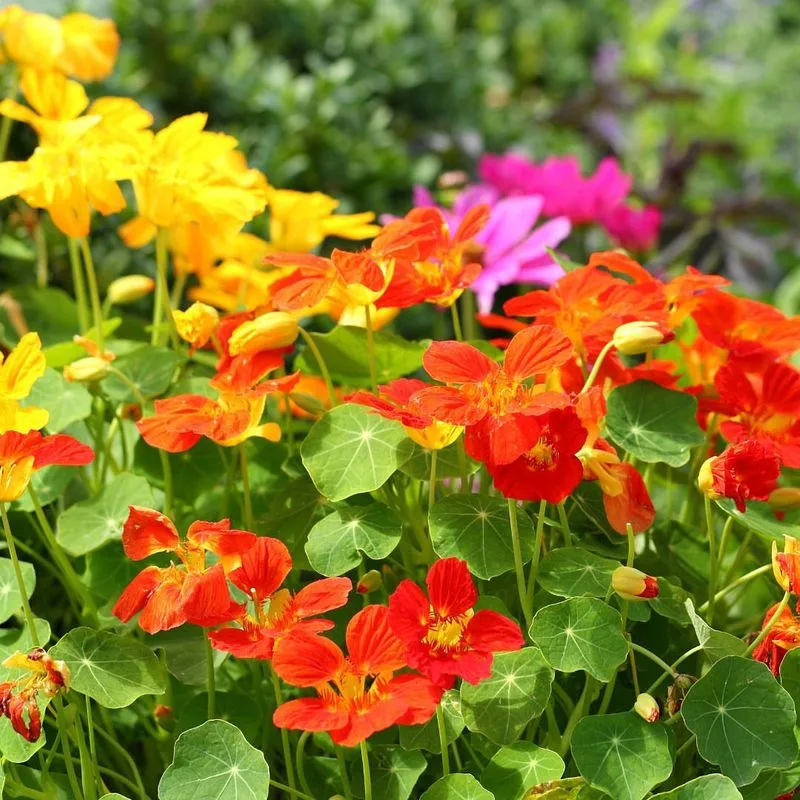
Nasturtiums are a burst of color and flavor in any garden. Their peppery leaves and jewel-toned flowers are both edible, adding zest to salads and garnishes. These cheerful climbers spill over pots and walls, creating a cascade of vibrant hues. Nasturtiums are not just pretty; they’re excellent companion plants, deterring pests from nearby crops. Fast-growing and low-maintenance, they thrive in poor soil, making them perfect for novice gardeners. The sight of nasturtiums swaying with the breeze is equally delightful as their taste.
Swiss Chard
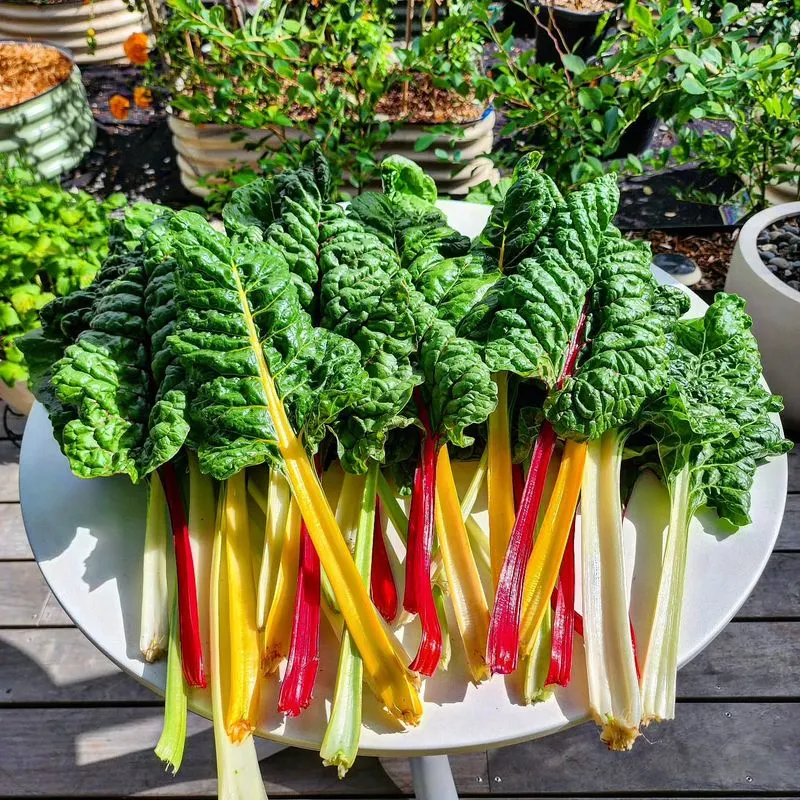
Swiss chard brings a rainbow of color to both the vegetable patch and the culinary palette. Its vibrant stalks range from deep reds to bright yellows, contrasting beautifully with its glossy green leaves. Not only is it a visual treat, but it’s packed with nutrients and flavor. Swiss chard is versatile in the kitchen, suitable for sautés, stews, and salads. Easy to grow, it tolerates a range of soil conditions and continues producing throughout the season. Its resilience and beauty make it a favorite among gardeners and cooks alike.
Fennel
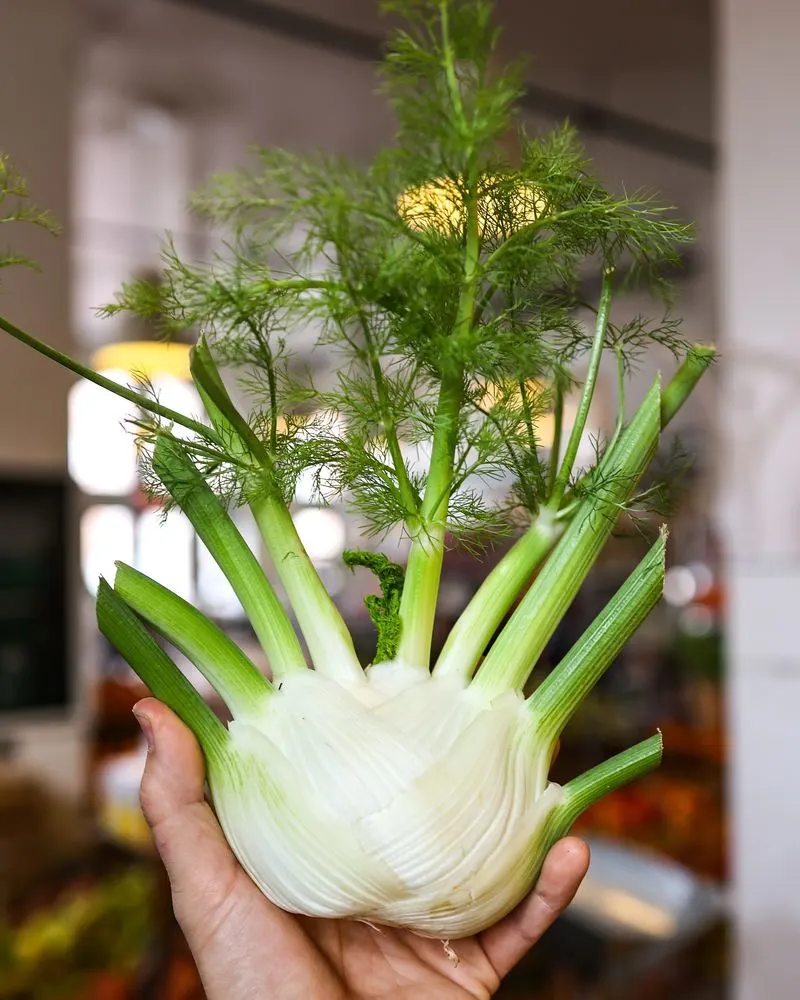
Fennel stands tall with its feathery foliage and aromatic presence. Its bulb, stems, and leaves all offer culinary delights, adding a sweet, licorice-like flavor to dishes. The plant’s delicate yellow flowers attract beneficial insects, enhancing your garden’s health. Fennel thrives in sunny spots with well-drained soil, making it an adaptable choice for various garden styles. Its statuesque form adds vertical interest, creating a focal point in any planting scheme. Beyond the kitchen, fennel’s charm lies in its graceful appearance and garden contributions.
Thyme
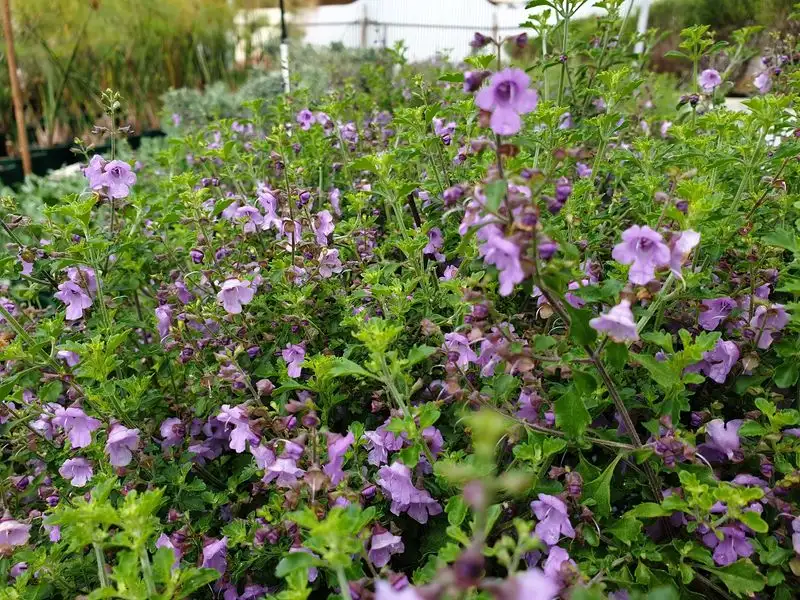
Thyme offers a subtle yet complex flavor profile, perfect for seasoning a variety of dishes. In the garden, its low-growing form and tiny flowers create a charming groundcover. This hardy herb thrives in sunny spots and well-drained soil, requiring minimal attention. Thyme’s small flowers attract bees, promoting pollination and garden health. It’s an excellent choice for edging paths or filling in spaces between stepping stones. The versatile nature of thyme ensures it remains a staple in gardens and kitchens, adding both beauty and taste.
Artichoke
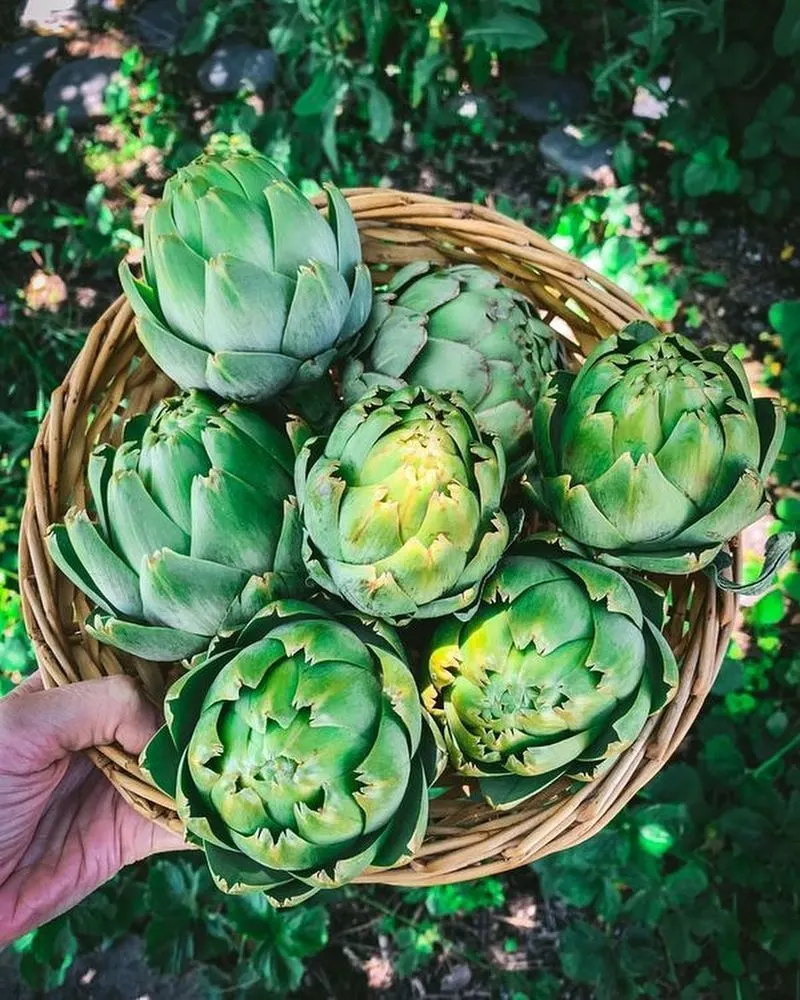
Artichokes are architectural wonders in the garden, with their large, silvery leaves and striking flower buds. These plants not only provide culinary delight with their edible hearts but also add a dramatic visual element. Artichokes thrive in sunny, well-drained areas, offering a bold statement in any landscape. Their unique appearance and functionality make them a favorite among gardeners seeking something out of the ordinary. In addition to their aesthetic appeal, artichokes provide a rewarding harvest, combining beauty and utility in one plant.
Sunflowers
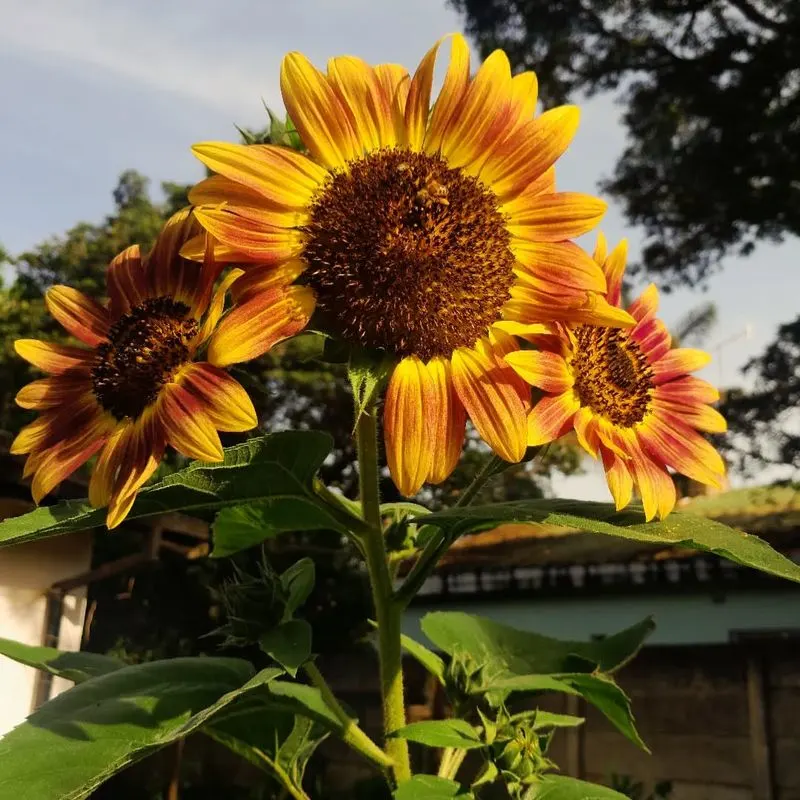
Sunflowers are synonymous with joy and summer. These towering giants bring sunshine to any garden with their bright yellow petals and generous seeds. Not just ornamental, their seeds are a nutritious snack, beloved by humans and wildlife alike. Sunflowers thrive in sunny, open spaces and are remarkably easy to grow. They make a perfect backdrop for smaller plants or can stand alone as showstoppers. Watching them turn their heads towards the sun is a simple pleasure, one that embodies the spirit of carefree days.
Mint
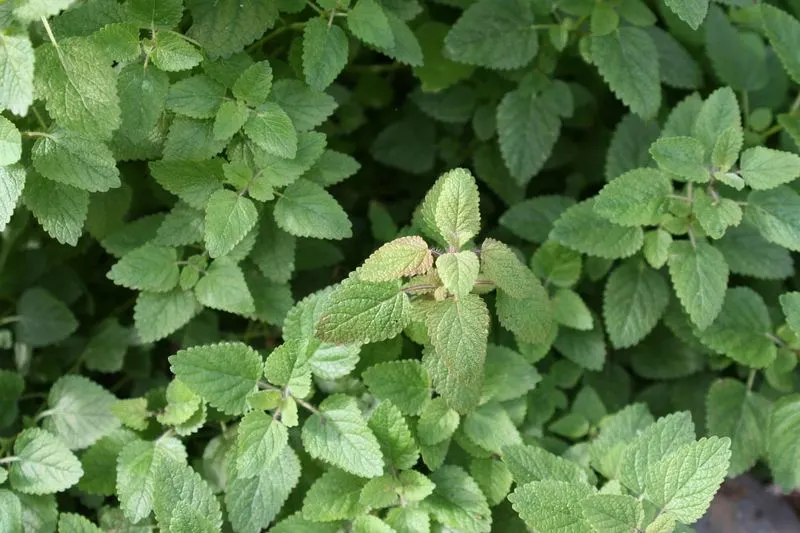
Mint is a garden staple with its refreshing scent and vigorous growth. This perennial herb is perfect for adding a burst of coolness to drinks and desserts. Its lush green leaves make it an attractive groundcover or container plant. Mint’s rapid spread can be both a blessing and a curse, so consider potting it to keep it contained. The aroma of mint wafting through the garden on a warm day is an invigorating experience. It’s a sensory plant, engaging both taste and smell, offering versatility and charm to any space.
Viola
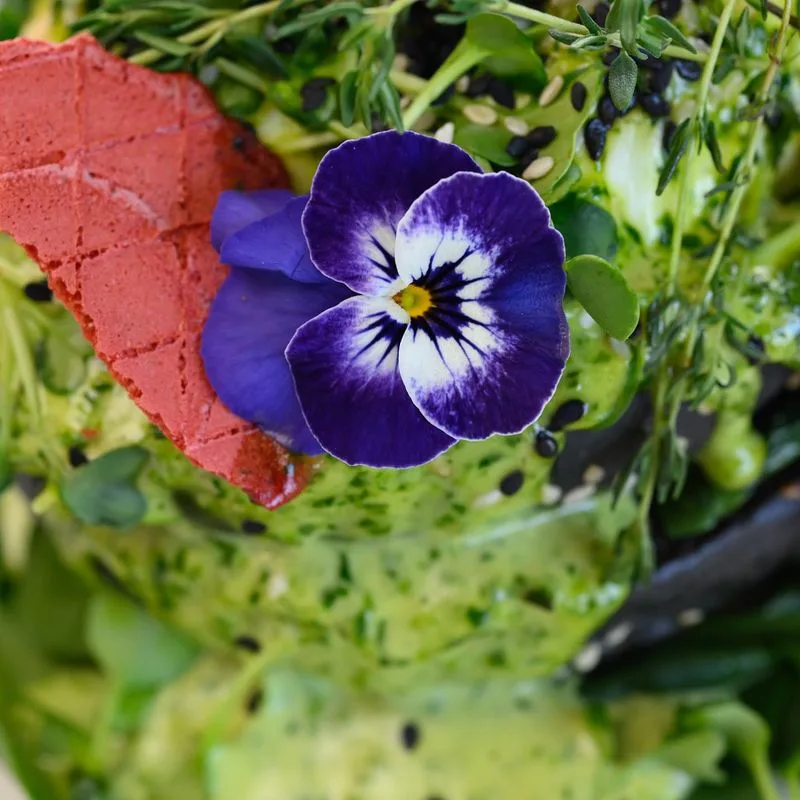
Violas are petite yet captivating, their delicate flowers offering a splash of color in the garden. These blooms are also edible, adding a whimsical touch to salads and desserts. Violas thrive in cooler climates, making them perfect for spring and fall gardens. Their cheerful faces and varied hues bring brightness to any planting scheme. Easy to grow, they adapt well to both beds and containers. The charm of violas lies in their simplicity and versatility, making them a beloved choice for gardeners and culinary artists alike.
Sage
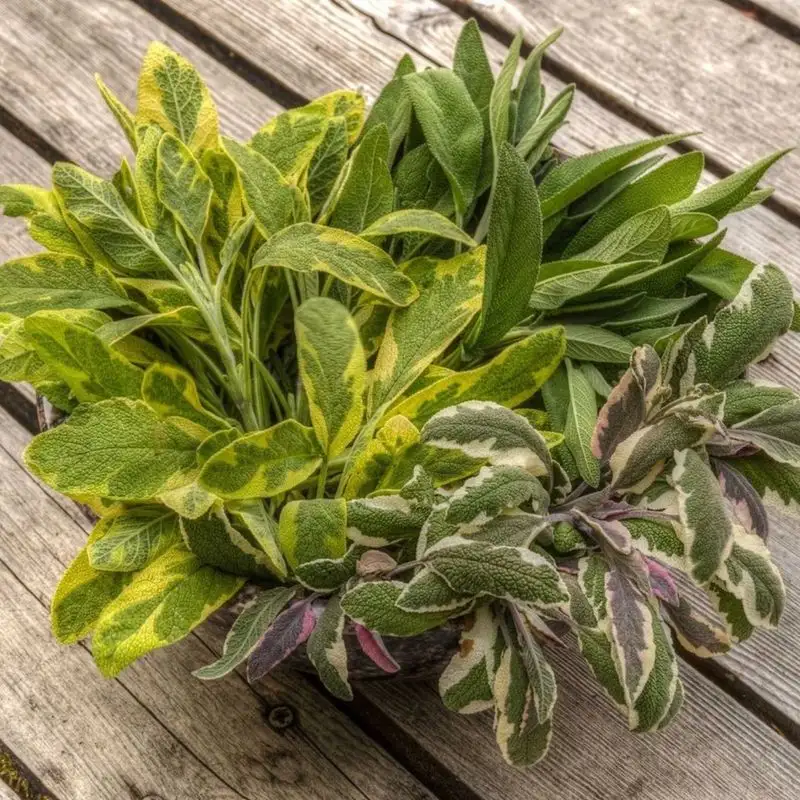
Sage is a timeless herb with a rich history and earthy aroma. Its soft, velvety leaves are a tactile delight, while its flavor enhances a variety of dishes. In the garden, sage offers structure with its bushy form and subtle blooms. This hardy perennial thrives in sunny spots with well-drained soil. Sage is also known for its medicinal properties, adding to its appeal. Its muted colors provide a calming presence, complementing more vibrant plants. A must-have for those who appreciate both culinary and ornamental qualities in their garden.
Borage
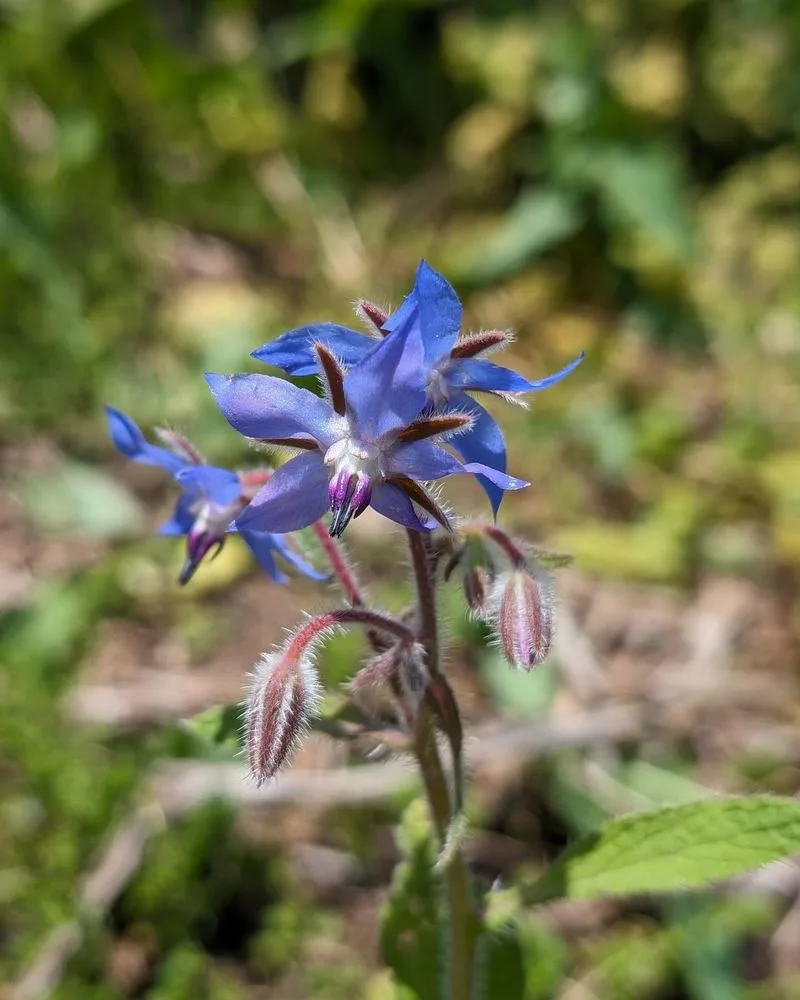
Borage stands tall with its striking star-shaped blue flowers that are as edible as they are beautiful. Often used to garnish cocktails and desserts, these blooms offer a mild cucumber flavor. Borage is a favorite among pollinators, attracting bees and enhancing garden biodiversity. It thrives in well-drained soil and sunny locations, making it easy to grow. The fuzzy leaves and vibrant flowers add texture and color to garden beds. Borage is not only a feast for the eyes but also a gift to the palate, offering a unique blend of beauty and taste.
Marigold
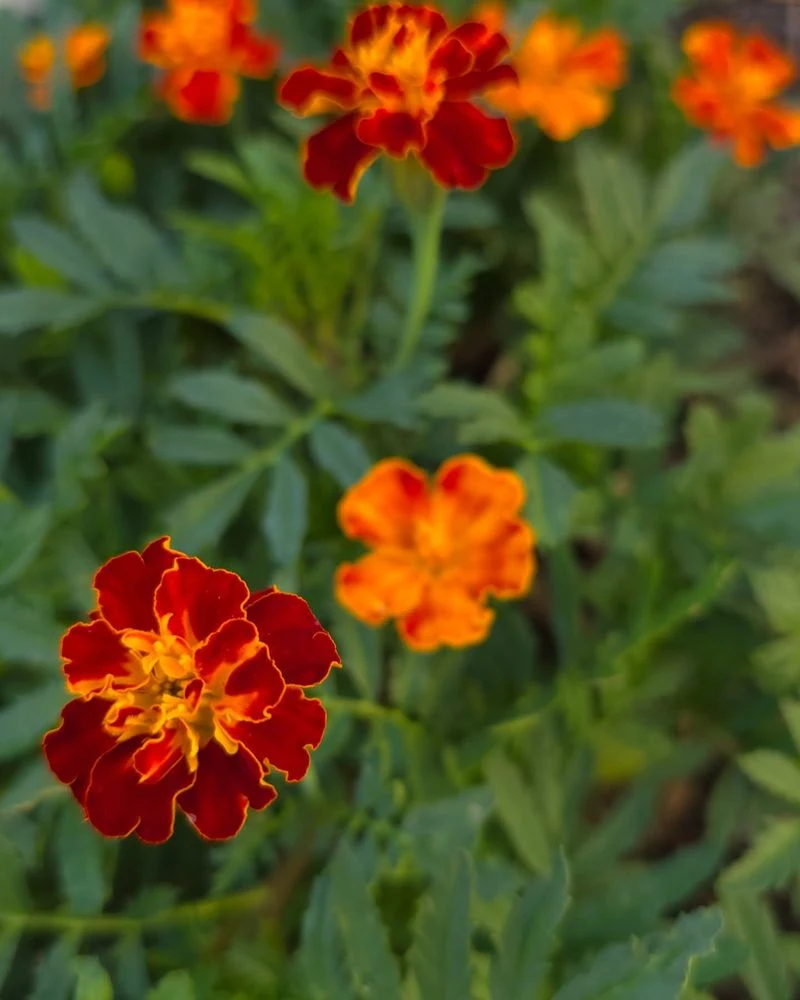
Marigolds light up gardens with their vivid orange and yellow blooms. These flowers are more than just ornamental; their petals are edible, adding a splash of color to dishes. Known for their pest-repelling properties, marigolds are often planted alongside vegetables. They thrive in sunny spots, bringing warmth and brightness to any garden space. Easy to grow and maintain, marigolds are a favorite among gardeners of all levels. Their cheerful appearance and practical benefits make them a garden staple, enhancing both beauty and functionality.
Lemon Balm
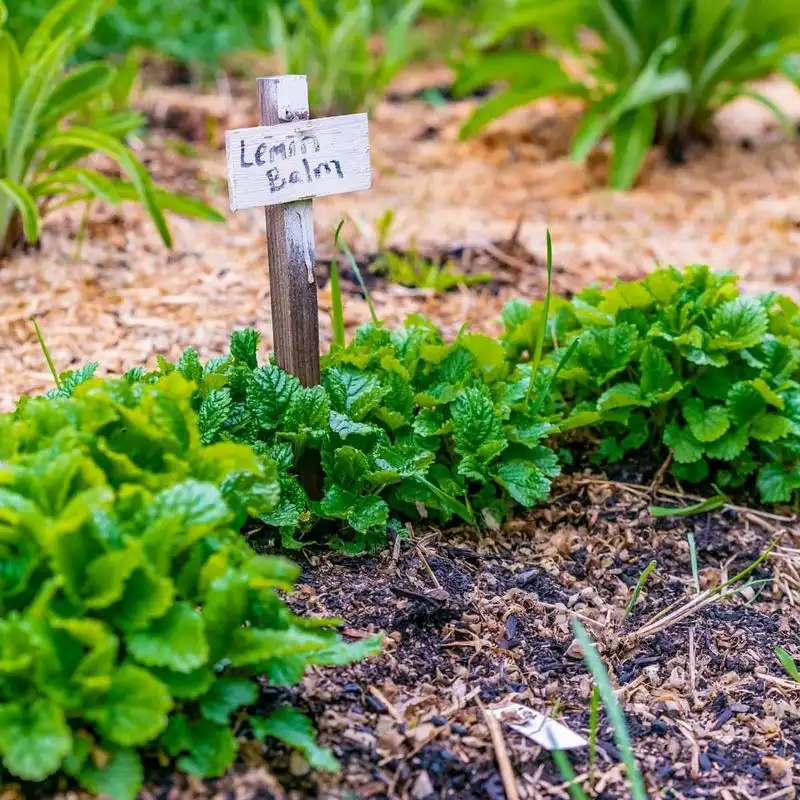
Lemon balm is a fragrant herb that delights with its citrusy aroma and calming properties. Its lush green leaves are perfect for teas and culinary uses, offering a refreshing twist to dishes. In the garden, lemon balm acts as a gentle groundcover, thriving in both sun and partial shade. Its ease of growth makes it a favorite for herbal gardens. The plant’s soothing scent is known for its stress-relieving qualities, providing a sense of tranquility. Lemon balm’s dual role as a culinary and aromatic plant makes it a garden essential.
Bay Laurel
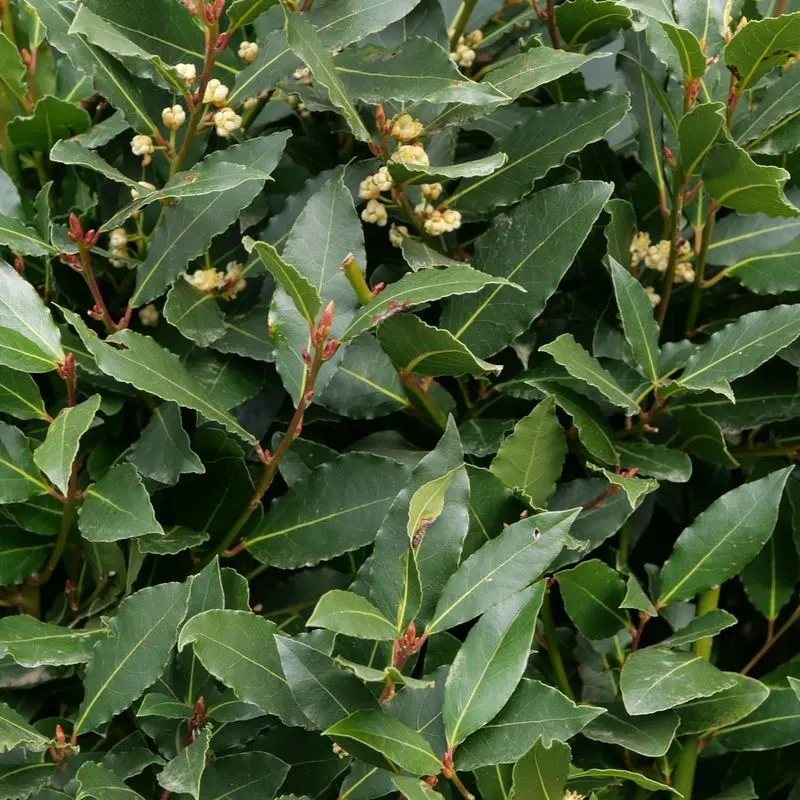
Bay laurel is a symbol of elegance and culinary excellence. Its aromatic leaves are a staple in kitchens, used to flavor soups and stews. The plant itself is an evergreen beauty, with glossy leaves that add sophistication to any garden. Thriving in sunny, sheltered spots, bay laurel can be grown as a shrub or tree. Its slow growth and minimal care requirements make it a practical choice for gardeners. Beyond its culinary uses, bay laurel is a timeless addition to the garden, offering both utility and visual appeal.
Edible Chrysanthemum
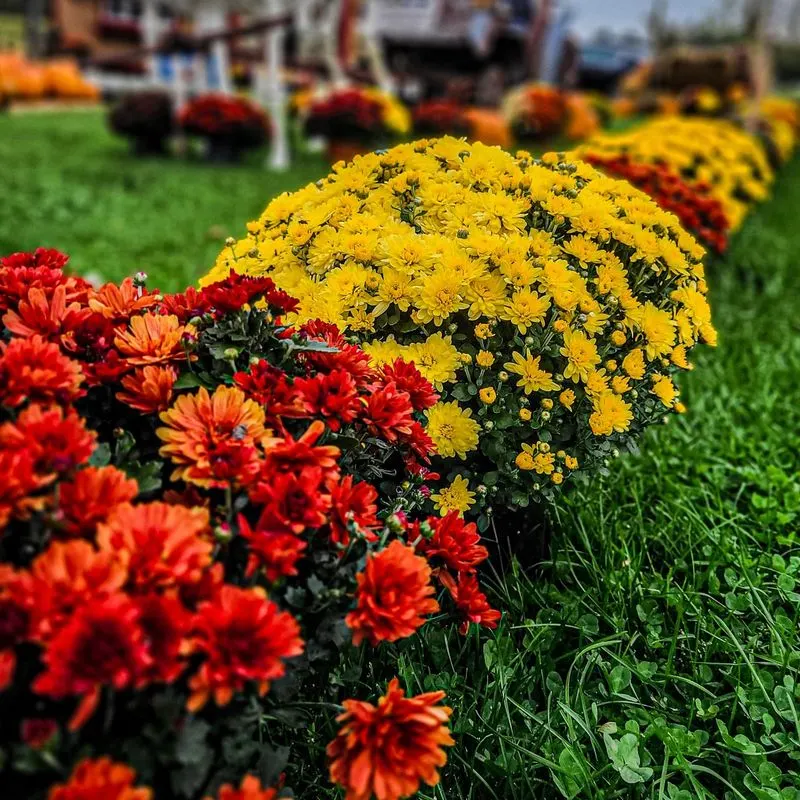
Chrysanthemums are renowned for their vibrant blooms and edible petals, bringing color and flavor to salads and teas. These flowers thrive in sunny spots, offering a burst of color from late summer to fall. Their diverse range of hues adds depth to garden designs, while their insect-repelling properties benefit surrounding plants. Chrysanthemums are easy to grow, requiring minimal care. Their striking appearance and practical uses make them a beloved choice for both ornamental and culinary gardens. A plant that truly celebrates the beauty of autumn.
Coriander (Cilantro)
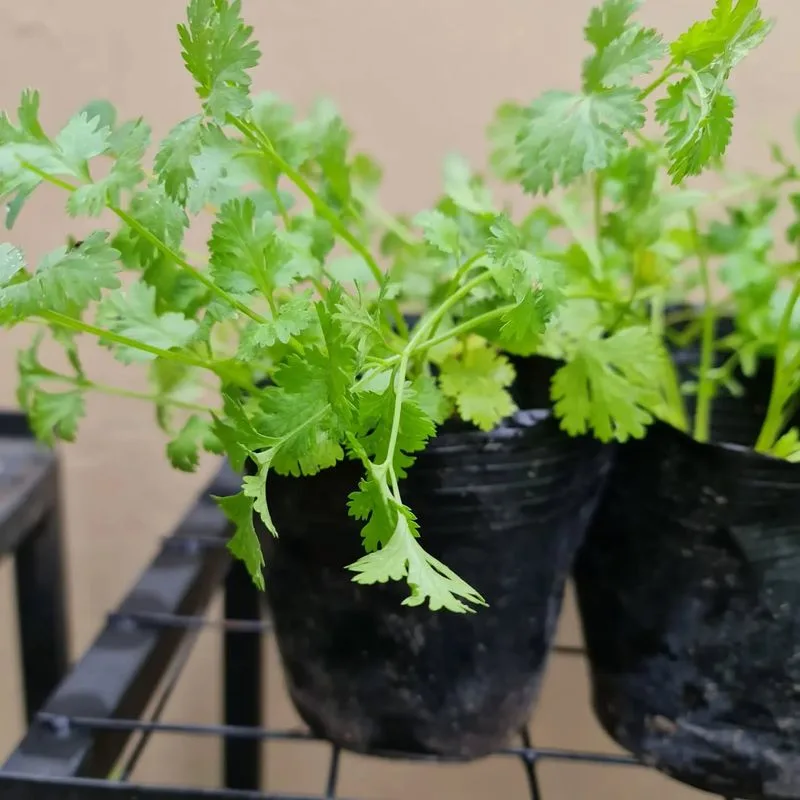
Coriander, known as cilantro in its leafy form, offers a unique flavor that divides opinions. Its bright green leaves and delicate white flowers add texture to gardens. Used in cuisines worldwide, coriander is versatile, enhancing both savory and sweet dishes. The plant thrives in sunny spots with well-drained soil, making it easy to cultivate. Coriander’s rapid growth and dual usage in both leaves and seeds make it a practical addition to any garden. Its distinct taste and visual appeal make it a staple for adventurous cooks and gardeners alike.

